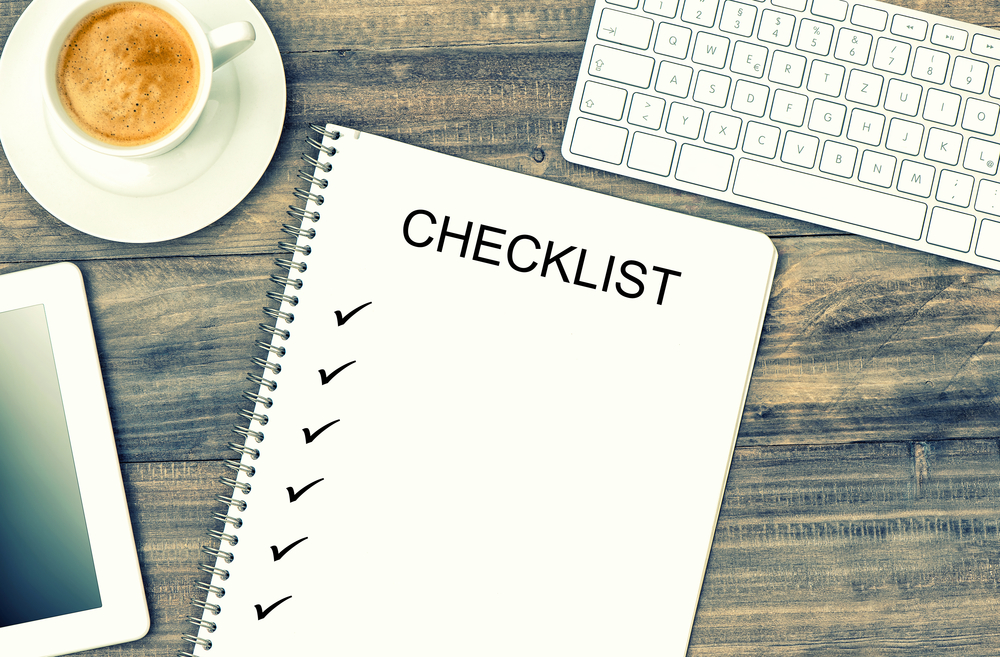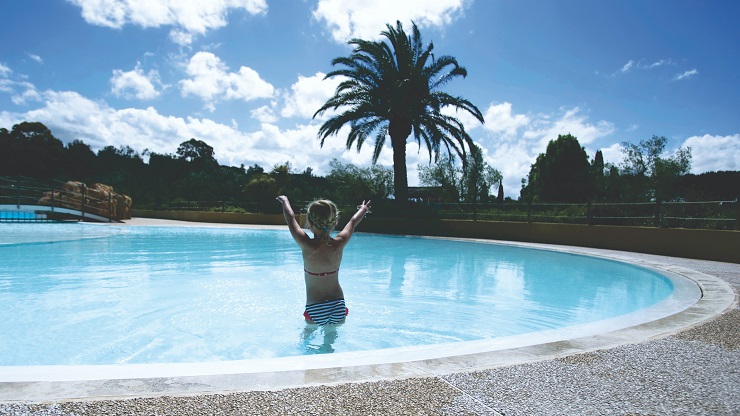Are you new to pool ownership? Is this the first year you’re going to DIY pool maintenance? No matter which end of the pool owner spectrum you fall into, you will want to have a simple maintenance schedule so your pool water is always crystal clear and free of bacteria.
It’s easy to forget when you last tested the water or cleaned the filter or added chlorine. Yes, it’s easy to see if you’ve skimmed the surface because if you have, nothing will be floating, if you haven’t there will be debris on the surface or falling to the bottom of the pool.
Make time in your schedule this summer to clean the pool and get on a regular maintenance schedule or you may be facing algae filled water, damaged equipment and even a pool that you cannot enjoy.
New To Pool Ownership? Simple Maintenance Schedule
Swimming pool maintenance may not be fun, but it is necessary. Swimming pool maintenance is something you need to take time out of your freetime to perform and to remember to perform. Sometimes, for a new pool owner or a new to cleaning the pool themselves pool owner, it’s easy to forget when or if something was taken care of.

We know you want your pool to be inviting and swimmable for those times you just want to cannonball in and swim some laps! We have put together this list of simple maintenance tips and why they need to be kept up with.
Save time! (and maybe money!)
When your pool is cleaned and maintained regularly it will take you less time every time. That is a win, right?! If you have a routine and get into a groove, the maintenance duties may take less time than you originally started out with.
It’s easier to prevent than to fix water issues
Take it from us, it is easier to keep up with pool maintenance than to try and rid the pool of algae and the slime it leaves behind. Believe us, if your pool gets filled with algae you will likely need to call on the services of a pool maintenance pro and you will also be looking at water that is unable to be used!
It doesn’t take long, or too many days of neglect, for pool water quality to suffer. This is especially true if you use a pool cover. The combination of water and heat and a cover is the recipe for an algae bloom outbreak.
Also, the people who use your pool bring in contaminants like:
- Lotions
- Shampoo
- Hairspray
- Deodorant
- Dead skin
- Fecal matter… we didn’t want to go there, but it’s true
There is no quick fix for an algae filled pool. It will require shocking the water (super chlorinating it) cleaning the pool filters to ensure no algae spores are in it and a deep, deep cleaning of the pool itself.
You’ll spend less on pool chemicals
When you’re cleaning the pool yourself you will need to buy all of the chemicals and test kits and strips and find a place to safely store them. This will be an upfront cost to be prepared for.
Our point here is that if you have a maintenance schedule for testing the pool water chemistry and addressing any changes as soon as possible you will user fewer chemicals to get the water chemistry just right.
A pool that is cleaned regularly will use a fraction of the chemicals you’d need if you’re dealing with water chemistry that is out os balance.
How to create your own simple maintenance schedule
Step 1: Know how to clean it
Swimming pool chemistry is a delicate balancing act and because every pool is different based n size and use and the equipment that’s been installed, you need to know how to clean your own unique pool. Hopping onto Google is not your best bet. For the first maintenance session, you may want to call a swimming pool service contractor in your area and ask him to clean your pool and give you a lesson on what your pool needs. There will likely be a cost for this, but knowing how to properly clean your pool will protect your investment.
Step 2: Don’t go it alone
If everyone is using the pool, then everyone should play a role in keeping it cleaned and maintained. Taking ownership of the tasks will teach responsibility. Also, if you’re ever not there someone else in the house needs to understand the nuances of pool water chemistry and cleaning and vacuuming.

Step 3: Write it down and post it in a prominent space
Write down your pool maintenance schedule. It’s idea to not only write it down, but to check it off when you have completed the tasks. This keeps you aware of what you have done, and when you’ve last done it.
Step 4: Be consistent
Consistency is key to pool water maintenance. Add chemicals at the same time. Run the pump for the correct number of hours. Schedule the tasks and ensure they are done according to the schedule you’re working from.
Here are examples of pool maintenance tasks you will need to perform daily, weekly, monthly and annually:
Daily pool maintenance tasks
- Adjust the pool water levels Take a quick look to see if the water in your pool is at the right level. If the water levels are too high, your pool skimmers won’t be able to skim out the debris and contaminants from your pool water. On the other hand, if it’s too low, the skimmers will suck in air, which may cause damage.
- Check the pool water’s pH and chlorine levels Keep the pool water’s pH and chlorine levels within the normal levels to ensure the water is safe for swimming. The pool water pH level should be anywhere between 7.2 and 7.6 while its chlorine levels should be between 1 and 2 ppm
- Inspect your skimmer and pump baskets Check the skimmer and pump baskets and remove debris. Keeping the skimmer and pump baskets clean would keep your pool pump and filtration system in good working condition.
- Check your pool pump and filter Look at the filter pressure gauge to see if the pressure reading is within the normal range. If the pressure reading is too high, it’s a good indication that your filter is already dirty and needs to be cleaned. If the pressure falls below the normal range. It could mean that either your water level is too low or there’s a clog right before your filter, which you need to repair. Ask a pool contractor what the correct level is and write it down on the pump itself.
- Run your pool pump Running the pool pump circulates pool water and prevents algae growth and also get rid of any debris and contaminants in the water. During the summer, it’s best to run your pool pump for about 12 hours each day. You can split these times so that you can schedule this during off-peak hours so that your electricity bill won’t skyrocket. Just make sure that you fit your pool pump with a timer for this.
- Check your pool area’s fence and gates Shake your pool fence in different areas to check if they are still strong and sturdy, and inspect if some parts of the fence need repair or if there are any spots that have openings where a small child or animal can go through. Inspect the latches and locks to make sure that they’re still in good working condition.
- Check your pool cleaners If your swimming pool is fitted with an automatic or robotic pool cleaner, inspect the bags and empty them out if they are full.
Weekly pool maintenance tasks
- Shock your pool The weather conditions coupled with the frequent use of your swimming pool makes pool water more susceptible to problems. This is why it’s a good idea to set aside a day during the week to shock your pool to clean your pool from any debris and to get rid of any microbes and organic materials in your pool.
- Skim off leaves and debris Gather up any leaves, insects, and other debris floating on your pool water before they sink to the bottom. This not only makes it much easier for you to get rid of these, but it will also help you prevent these from staining the bottom of your pool, which can take a bit longer to remove. Skimming off debris is honestly a daily task.
- Brush and vacuum your pool Brushing the sides and bottom of your swimming pool and vacuuming them on a weekly basis will help get rid of dirt and scum that may have accumulated during the week, which can help maintain good water circulation in your pool and prevent algae growth.
- Treat and destroy algae Algae grow more rapidly during the summertime because they love the sweltering temperatures. Unfortunately, algae growth can be nearly invisible to the naked eye during its onset. Add an algaecide regularly.
- Check pool water alkalinity levels Regularly checking pool alkalinity levels helps ensure the pool’s pH levels are within normal range so that it’s not only clean and sanitized but also safe for swimming.
- Backwash your pool filters If your pool is fitted with a DE or sand pool filter, make sure that you backwash these every week to get rid of all the contaminants and debris trapped in them to ease the pressure in your pool filtration system and for it to keep your pool clean efficiently. Ask a pool contractor how often the pool needs to be backwashed — this is a task that uses a lot of water.
Monthly pool maintenance task
- Deep clean your pool filters If you’re using a cartridge pool filter, make it a point to give the cartridge a good chemical soaking followed by a good hose down to really get rid of all the trapped debris and contaminants in the cartridge.
- Test your water Bring a sample of your pool water to your local pool supply store to have it tested. That way, you can really see if your pool water’s pool chemistry is balanced and within normal levels, particularly its calcium hardness and cyanuric acid levels. That’s because the warm temperatures of your pool water during the summertime would mean that you may need to adjust the pool chemicals in your pool. Otherwise, you may run into more serious pool problems like staining, scaling, and etching of the sides and bottom of your swimming pool.
- Check your pool’s time clock Power outages are frequent during the summer. These can easily cause the manual time clock installed in your pool system to stop running. Quickly inspect this and reset this if needed.
Annual pool maintenance tasks
- Inspect pool plumbing system Carefully check the different equipment, piping, and fittings for wear and tear. Replace those parts that show signs of damage and wear. Lubricate the o-rings of your pump lid, filter, chlorinator, and valves with Teflon lube. Contact your local pool care company if you’re not quite sure.
- Check your pool’s accessories Do a quick inspection on your pool light fittings, slides, pool ladders, and other pool accessories make sure that their bolts are tight. Replace any bolts and parts that may have rusted or have become loose over time.
- Give your pool cleaner a tune-up Inspect your automatic or robotic pool cleaner and replace any parts that have already worn out from being used on a regular basis.
